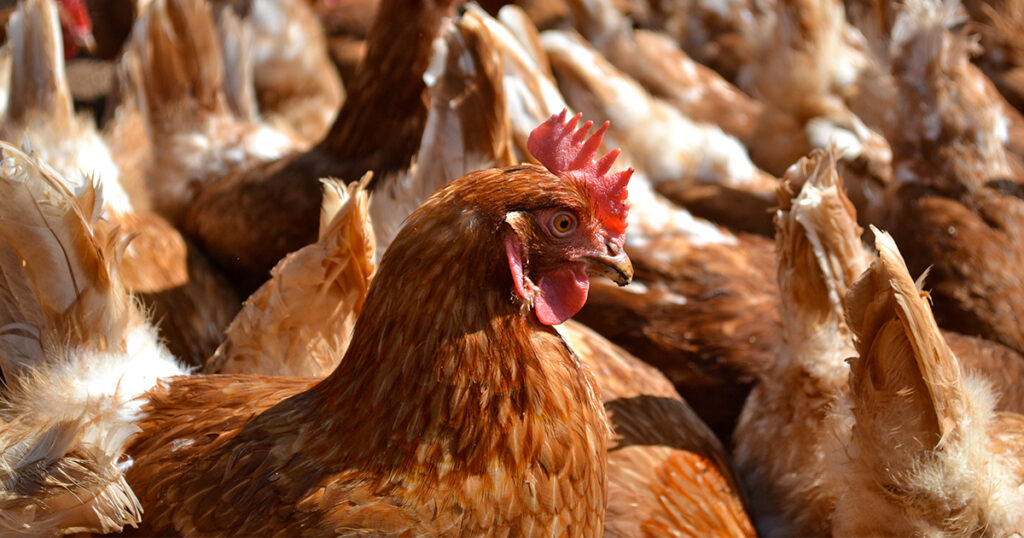
Jeremy Bentham scorned polite society but loved his London cats, even the pasta-eating swashbuckler Sir John Langbourne. Life with Langbourne led to feline character-study (“His moral qualities were most despotic—his intellectual extraordinary; but he was a universal nuisance”) and set the philosopher brooding on the rights of birds and beasts. “The question is not, Can they reason?” he wrote in 1780, “nor, Can they talk? but, Can they suffer?”
In Our Kindred Creatures, Monica Murphy and Bill Wasik ably unpack Bentham’s riddle. Their first book, Rabid (2012), offered a deft portrait of a single virus. Kindred Creatures, more diffuse but much more ambitious, is at once a model of historical recovery and a bracing takedown of our own attitudes toward those we caress and those we devour. Murphy and Wasik are married collaborators. She is a New York City veterinarian; he is editorial director of The New York Times Magazine and also the inventor of the flash mob—a useful credential, since the 19th-century crusade for animal protection was a marvel of culture jamming.
With abolition achieved, American reformers, “their imaginations, trained for decades on ghoulish narratives of cruelty to enslaved people,” cast about for new noble causes. Animal welfare was already popular in Britain and boasted royal patrons; an American version seemed to promise high sentiment, built-in drama, and brisk results. “There were unscrupulous streetcar companies to litigate against,” the authors write, “dog-fighting rings to be broken up, exotic-animal exhibits and horse races to monitor, little boys to educate in the habits of kindness.” A confident urban elite took to the alleys and the cattle cars, eager, advocates proclaimed, for “a new type of goodness.” Our Kindred Creatures is the story of their wrenching re-education.
Adventures in reform over the course of three crucial decades guide the narrative, from the 1866 founding of the American Society for the Prevention of Cruelty to Animals (ASPCA) to the 1896 creation of the Bronx Zoo. Animal rights activists used the courts and the press to protest the shiploads of tortured green sea turtles headed for New York City soup tureens, the packs of stray dogs routinely axed and bludgeoned in Philadelphia, the Kansas bison shot from train windows by eastern sportsmen. Big money of the Gilded Age pushed back. New York’s horse-drawn streetcar business, infamous for equine mistreatment, was controlled by the Vanderbilts. America’s medical establishment insisted that good science demanded high-volume vivisection: pain equaled progress.
Wasik and Murphy scour primary sources to fine effect, mapping the beachheads and standoffs of a secular awakening staffed by eccentrics, from P. T. Barnum to the determined women behind the Audubon Society. Their book is both an American bestiary and a case study in imperfect, vertiginous moral change, helped along by a bug and a novel. The Great Epizootic of 1872 (a horse flu pandemic, the worst in history) brought the nation to a standstill—and accelerated the rise of serious veterinary medicine. In 1890, George Angell of the Massachusetts SPCA was sent a copy of the novel Black Beauty and promoted it heavily; soon millions wept over a faithful horse abused by humans, and Anna Sewell’s equine autobiography became the Uncle Tom’s Cabin of animal protection.
Early on, activists fought against individual, intimate cruelties: a horse whipped to exhaustion, a mother cat mourning her drowned kittens. But after the Civil War, America’s human population doubled in 35 years to 70 million, and feeding the hungry cities meant animal suffering on an astounding scale. Meat lords like Gustavus Swift and Philip D. Armour segregated livestock from human society as never before, “food animals shunted off into a shadow realm where the rhythms of the natural world no longer applied.” The great Chicago packinghouses became tourist attractions, where in 1889 Rudyard Kipling watched a young woman of fashion, “the red blood under her shoes, the vivid carcasses tacked round her, a bullock bleeding its life away not six feet away from her, and the death factory roaring all round her. She looked curiously, with hard, bold eyes, and was not ashamed.”
Kindred Creatures is an energetic, nuanced account of a sea change in American sensibility, and it joins excellent recent biographies—like Ernest Freeberg’s portrait of 19th-century animal rights activist Henry Bergh, A Traitor to His Species—in the thriving literature of animal-human relations. Even so, its tight framing can sometimes distort: in 1866, the authors declare, “the notion of animals and their welfare as a cause was absent, undiscussed, unconsidered in America.” But anyone who saw newspaper woodcuts of battlefield photographs, or used a parlor stereograph, or spoke with a combatant, would know of the Civil War’s horrific four-footed casualties. Three million animals served, and half died. The mule and horse corpses left to rot after Gettysburg could be smelled 40 miles away.
Slaughter set-pieces of bison and passenger pigeon aside, the authors cling, hard, to the Boston-Philadelphia corridor. A wider lens would not have hurt, since San Francisco had an ASPCA chapter by 1868, Minneapolis a humane society by 1878. Up in Vermont, Kipling the animal lover was writing The Jungle Books, soon to shape the worldwide Scouting movement, its original oath proclaiming, “A Scout is a friend to animals. He should save them as far as possible from pain …”
Our Kindred Creatures is a slow burn of a book, and only in the last few pages do the authors break training, as journalist and scientist, and ambush our own selective hypocrisies. Americans spend billions to save charismatic megafauna and pamper our cats and cockapoos but do not flinch from the harrowing lives and dreadful deaths of American food animals.
Perhaps, they propose, our new social motto should be, Love thy neighbor as thy pet. And perhaps Jeremy Bentham and his many cats had it right: “Why should the law refuse its protection to any sensitive being? The time will come when humanity will extend its mantle over everything which breathes.”

